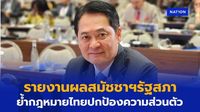On April 11, 2025, the Office of the Basic Education Commission (OBEC) in Thailand unveiled a significant policy concerning the use of artificial intelligence (AI) in the educational sector. This initiative, titled "Guidelines for Using AI for Teachers, Students, Schools, and Parents in Thailand 2568," aims to provide a comprehensive framework for effectively and safely integrating AI into the Thai education system.
The publication of this guide comes at a time when AI is revolutionizing various sectors globally, including education. The OBEC's guidelines are designed to foster understanding among teachers, students, and parents regarding the role and potential of AI in enhancing educational experiences. The document emphasizes the importance of AI in promoting personalized learning, improving teaching efficiency, and expanding access to quality education.
The guide begins with an accessible introduction to AI, explaining that artificial intelligence is technology that allows machines or computers to perform tasks that typically require human intelligence, such as reasoning, learning, and natural language processing. It categorizes AI into three levels based on capability: Narrow AI, which is designed for specific tasks; Artificial General Intelligence, which can perform a wide range of tasks similar to humans; and Artificial Superintelligence, which remains a theoretical concept.
One of the guide's key objectives is to highlight the benefits and risks associated with AI in education. It outlines three primary advantages: supporting personalized learning tailored to individual student needs, assisting teachers in evaluating and analyzing educational data, and enhancing students' digital skills through activities like programming and critical thinking.
Despite the promise of AI, the guide addresses common misconceptions, such as the belief that AI will replace teachers. In reality, it asserts that AI is a supplementary tool designed to alleviate workload and enhance teaching capabilities, not to replace the essential human interactions between teachers and students.
The guidelines also provide practical recommendations for various stakeholders. For teachers, it suggests using AI tools to design customized lesson plans and assess student learning effectively. For students, it encourages utilizing AI for supplementary learning outside the classroom, such as conducting research and engaging in problem-solving activities through educational games and simulations. Schools are advised to leverage AI for managing student data and improving infrastructure to support AI integration.
Additionally, the guide emphasizes the importance of ethical considerations in AI usage. It encourages educators to instill an understanding of AI ethics, including respecting privacy, avoiding biases, and ensuring responsible use of AI technology. It stresses that AI should not be used as a substitute for human judgment or creativity.
Furthermore, the guidelines recognize the need for schools to prepare for the AI era by enhancing their operational structures, training staff, and fostering a culture of AI literacy among students. However, the guide also acknowledges certain shortcomings. It highlights the lack of specific practical guidance for schools facing budget constraints, which is a common challenge in many areas of Thailand, particularly in rural regions.
The issue of digital inequality is also noted as a significant concern, as disparities in access to technology could exacerbate existing educational inequalities when AI is integrated into the system. The guide calls for more detailed recommendations on data security and compliance with personal data protection laws (PDPA), which are crucial in the digital age.
In an international context, the guide draws parallels with global efforts to integrate AI into education. For instance, UNESCO has published guidelines aimed at promoting responsible and innovative AI use in education, emphasizing its potential to support Sustainable Development Goal 4 (SDG4) related to quality education. Their document outlines various AI applications, such as Intelligent Tutoring Systems (ITS) and Automated Writing Evaluation (AWE), which enhance personalized learning experiences.
Moreover, the European Union has developed ethical guidelines for AI use in education, focusing on fairness, transparency, and human oversight. These guidelines categorize AI applications into four main groups: direct student support, enhancing student learning, assisting teachers, and supporting administrative functions.
In the United States, the Department of Education has introduced Intelligent Tutoring Systems that provide personalized feedback to students, emphasizing the importance of maintaining a "human in the loop" approach to ensure that teachers remain central to the educational process.
Australia has also established a national framework for Generative AI in schools, focusing on responsible and ethical AI use to benefit students and society. This framework highlights the need for fairness, transparency, and student engagement in AI practices.
Singapore's approach includes an AI in Education Ethics Framework that prioritizes agency, inclusivity, fairness, and safety, ensuring that AI is used responsibly in schools.
As Thailand embraces AI in education, it stands to learn from these international examples, adapting best practices to fit its unique context. The OBEC's guidelines signify a proactive step towards integrating AI into the educational landscape, aiming to enhance learning outcomes while addressing potential risks and ethical concerns.
In conclusion, while the OBEC's guidelines provide a solid foundation for AI integration in Thai education, ongoing efforts are needed to address challenges such as digital inequality and ethical considerations. The successful implementation of AI in education will depend on collaboration among educators, policymakers, and the community to create a supportive and equitable learning environment.






